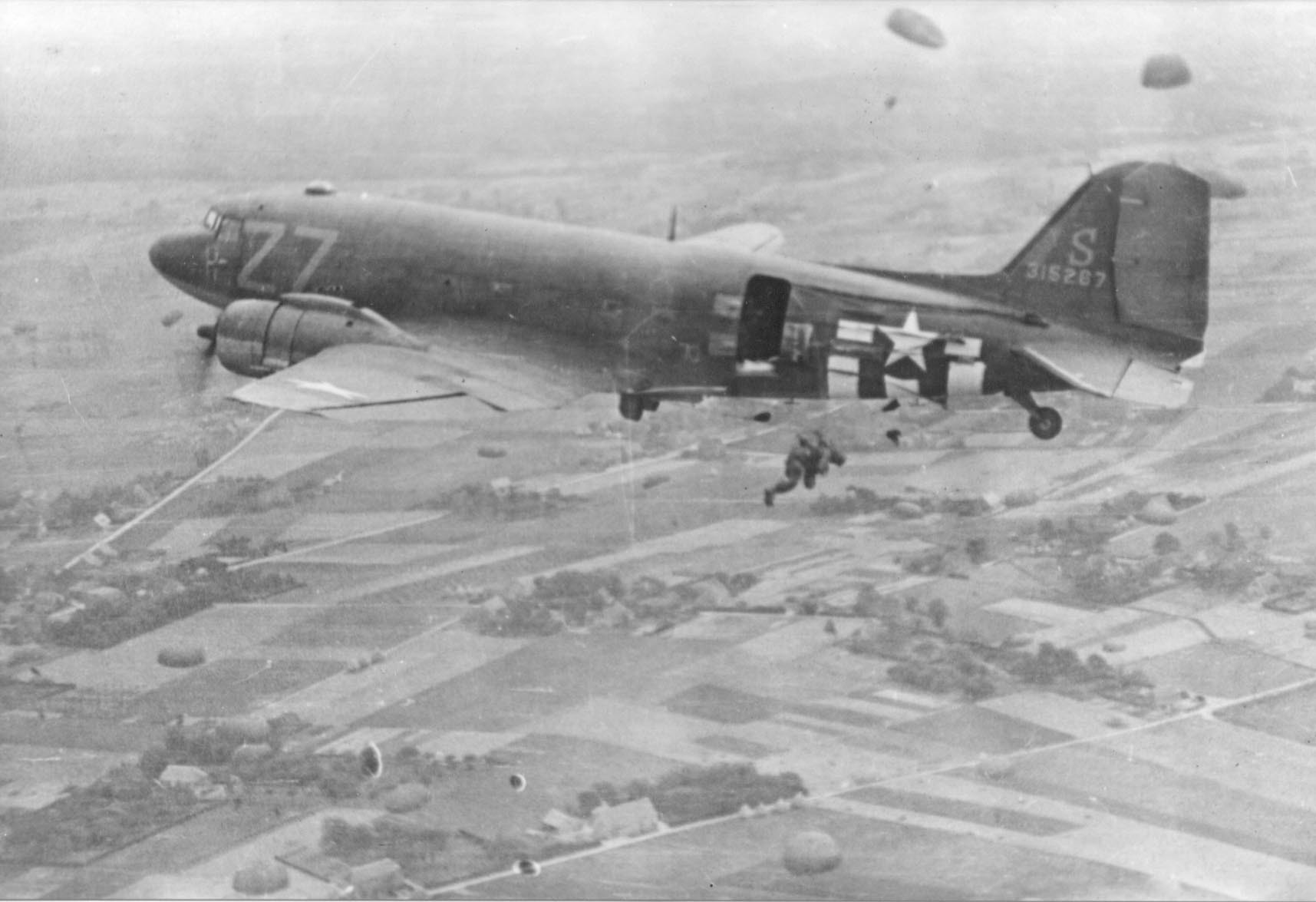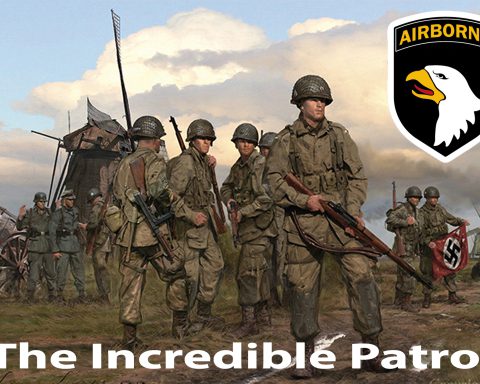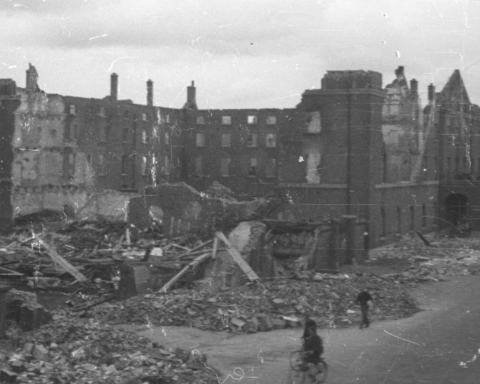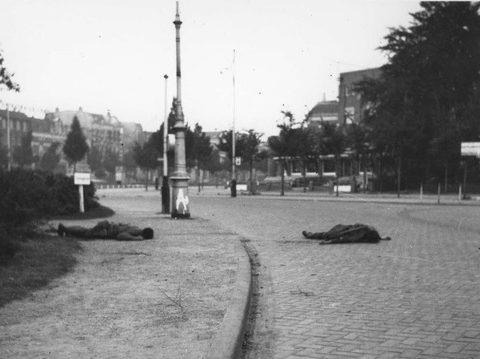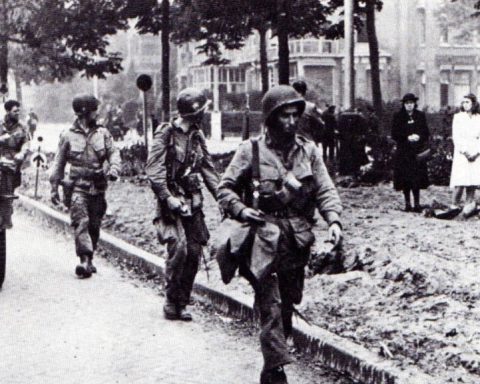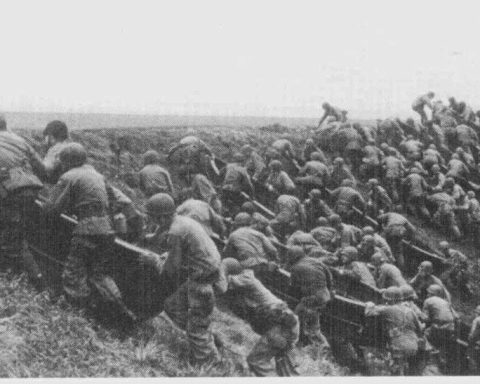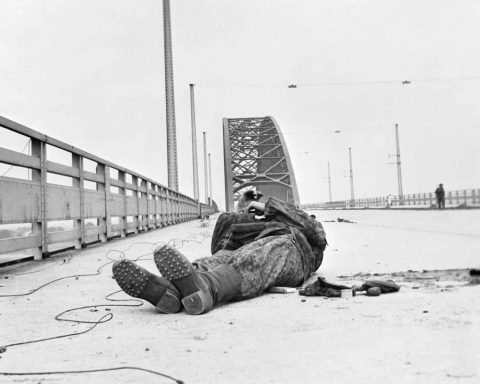If everything went as planned, the tanks and ground troops of XXX Corps could advance without any problems from the south over “a carpet of airborne troops” from the Belgian border to the Rhine bridge in Arnhem. At least: that was how the British army leadership had presented the advance of the ground troops to the commanders of XXX Corps.
In addition to airborne landings at Wolfheze, there were also airborne landings by two American airborne divisions on the first day of Market Garden. The American 101st ‘Screaming Eagles’ Airborne Division and the American 822nd ‘All American’ Airborne Division.
The 101st Airborne Division was dropped near Eindhoven, close to the position of the advancing ground troops on the border between the Netherlands and Belgium. Here the bridge at Son had to be captured. In addition, part of the 101st Airborne Division was also dropped near Veghel to capture the bridge over the Zuidwillemsvaart.
The 82nd Airborne Division landed at Groesbeek and its main objective was to secure the Waal Bridge and the railway bridge in Nijmegen. In addition, part of the division was dropped near Grave to take the bridge over the Maas. Finally, three bridges over the Maas Waal Canal, between Grave and Nijmegen, also had to be captured by the paratroopers.
Landings near Eindhoven
The 101st Airborne Division, led by General Maxwell Taylor, lost a relatively large number of aircraft during the landings. A total of 16 Dakota transport aircraft and 17 gliders were shot down by German anti-aircraft fire. However, the majority of the airborne troops landed exactly where they were supposed to land.
The 506th regiment of the 101st Airborne was tasked, among other things, with capturing the bridge over the Wilhelmina Canal in Son. When the American airborne troops wanted to enter Son, they were fired upon by German troops who had an 88mm gun at their disposal. After the German positions had been captured by the Americans and the cannon had been destroyed, the American paratroopers advanced to the bridge. The Germans blew up the bridge right in front of them.
Engineers from the 101st Airborne Division managed to partially repair the damage to the bridge, but trucks and tanks would not be able to cross the Wilhelmina Canal this way.
At Best there was another bridge over the Wilhelmina Canal. The 502nd regiment of the 101st Airborne Division was sent to this bridge, but this bridge was also blown up by the Germans. The 502nd regiment had also been ordered to capture the bridge over the Dommel at Sint Oedenrode. This went without any problems.
The task of the 501st Regiment, which had landed near Veghel, was also completed within a few hours. The bridge over the Zuidwillemsvaart was captured without any problems and the bridge over the river Aa was also captured.
Landings near Groesbeek
The 82nd Airborne Division, led by the young General Jim Gavin, landed on the hills near Groesbeek without major problems and without major losses. Just like the British at Arnhem, the planners had opted for landing zones far away from the target.
Together with General Gavin’s division, the headquarters of the Airborne Army also landed at Groesbeek. The headquarters of British General Boy Browning had little business here, but Browning wanted to be part of the largest airborne operation in history and so from the limited aircraft available, dozens of aircraft were freed up to allow Browning to have his way. .
Browning ordered General Gavin to protect the landing areas at Groesbeek because he expected German attacks from the Reichswald there. Gavin was also ordered by Browning to capture the bridges over the Maas-Waal Canal as quickly as possible.
The Dutch had informed the Americans that most Germans in Nijmegen had fled and that the Waal Bridge was barely defended. However, due to the priorities that Browning had given to Gavin, it was not until evening that General Gavin sent two companies towards the Waal Bridge.
In the meantime, a first defensive ring had been formed around the Waal Bridge that the Americans had to deal with. General Bittrich, who was in charge of the 9th and 10th Armored Divisions near Arnhem, had sent reinforcements to the Waal Bridge that afternoon immediately after the landings. That was the bridge where Bittrich wanted to concentrate German resistance against the Allied advance.
Of the two American companies sent by General Gavin to capture the Waal Bridge, only one platoon reached the Waal Bridge. But the lightly armed paratroopers could do little against the strong German resistance. The Waal Bridge therefore remained in German hands without any problems.
The ground troops of the 30th Army Corps would be needed to drive out the Germans at the Waal Bridge. But the arrival of the ground troops seemed to have to wait a while…

